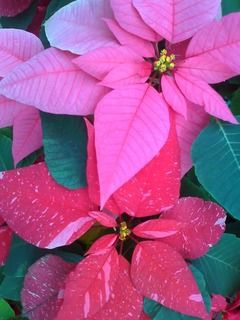
To decide where to make your cuts, you should be familiar with a couple of plant anatomy basics. When looking at a plant stem, you will see two distinct features: the place from which a leaf is growing is called a “node”. The length of stem between nodes is called the “internode”. Generally, the cut is made just above a node. This would leave you with a leaf or two, depending on the plant type, and a length of internode which can be dipped in a rooting hormone and placed in a rooting substrate. The lowest internode is the one that should be inserted into the rooting media. Cuttings placed upside-down will not root properly.
If the length between nodes is not long enough, you can always cut a longer piece of stem and cut or strip away excess leaves. Water is going to be lost through the leaves so the less surface area, the better. When propagating plants with very large leaves, part of the leaf can be trimmed off.
The type of media you use for your cuttings is important. Some plants will root readily in a glass of water, but not all. Perlite, vermiculite, sand and grit are all good types of rooting media. Potting soil with perlite added for extra drainage works, as well. Remember that these types of media do not hold moisture for long and check on your cuttings often. It is essential that the media be sterile to prevent disease from killing your cuttings.
While your cuttings are rooting, keep them in a humid environment as they will be very sensitive to water loss. This can be done with simple plastic wrap, a sturdy plastic cover, or a decorative cloche. Cuttings are ready to be transplanted when their roots are about an inch long. The new plants should be acclimated slowly to the dryer air outside of their covered environment.


